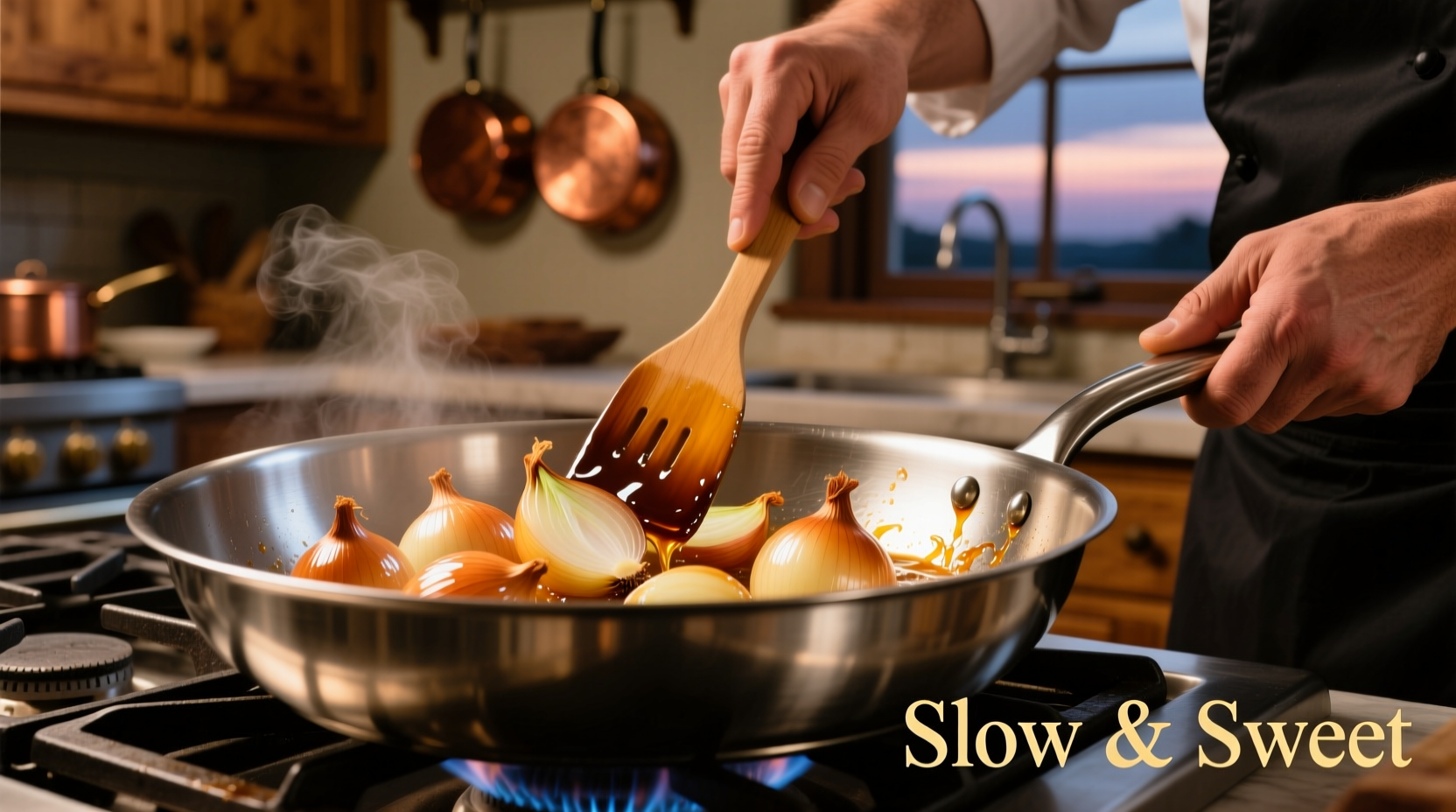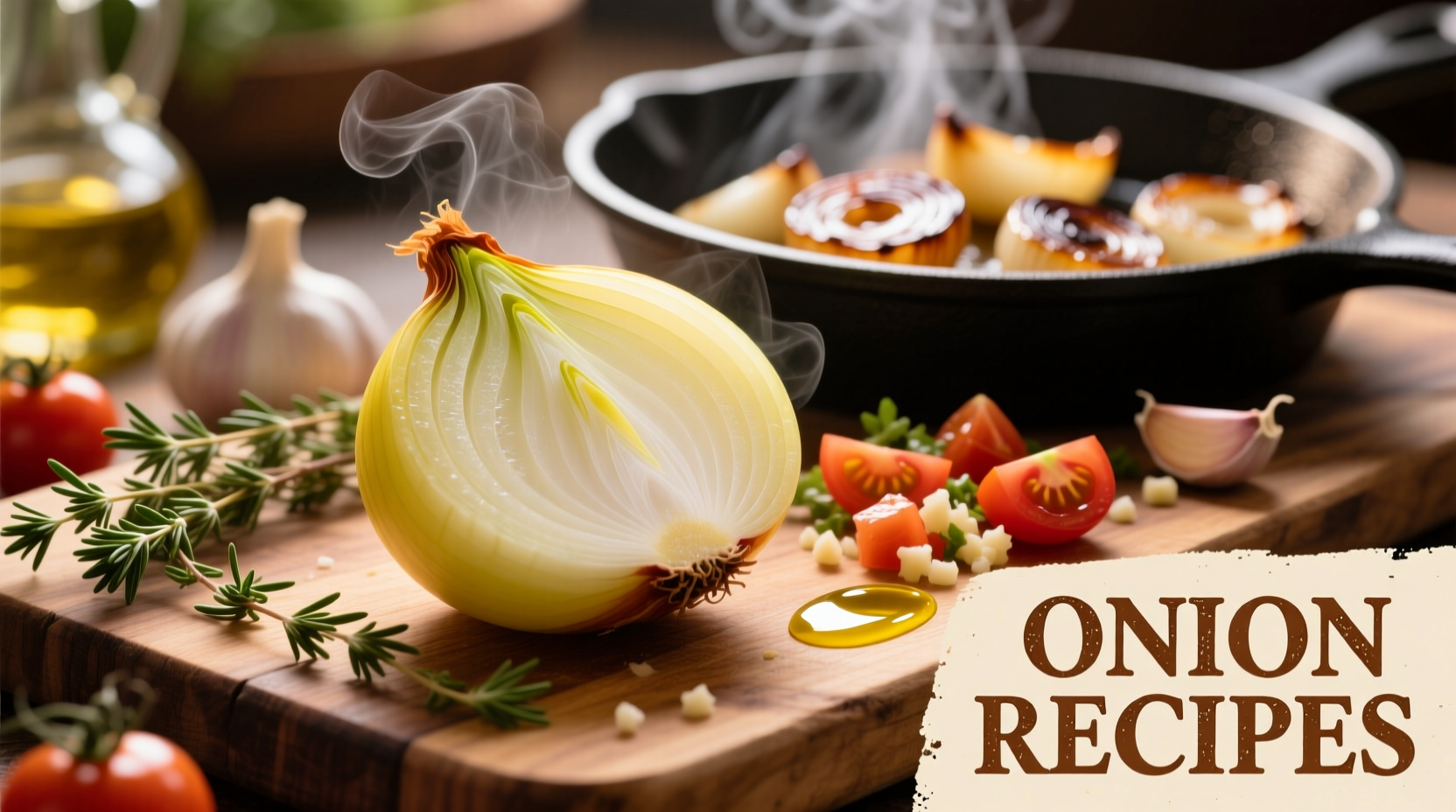Onions sit in 83% of American kitchens yet remain one of the most underutilized ingredients. Professional chefs consider onions the "flavor foundation" of nearly every cuisine worldwide, but home cooks often struggle with burning, uneven cooking, or overwhelming raw flavors. This guide solves those problems with practical techniques and diverse recipes that highlight onions' versatility.
Understanding Onion Varieties and Their Best Uses
Not all onions perform equally in every recipe. Choosing the right variety makes the difference between a dish that sings and one that falls flat. Here's how professional kitchens match onions to cooking methods:
| Onion Type | Sweetness Level | Best Cooking Methods | Storage Duration |
|---|---|---|---|
| Yellow Onions | Moderate | Caramelizing, roasting, soups | 2-3 months |
| Red Onions | Medium | Salads, pickling, grilling | 3-4 weeks |
| White Onions | Sharp | Salsas, Mexican cuisine | 2-3 weeks |
| Vidalia/Sweet | Very Sweet | Raw applications, quick sautéing | 2-3 weeks |
According to USDA food safety guidelines, proper storage extends onion shelf life significantly. Keep yellow and red onions in a cool, dark place with good air circulation—never refrigerate whole bulbs as moisture accelerates spoilage. Sweet onions require refrigeration after two weeks at room temperature to prevent sprouting.
Mastering the Caramelization Process
Caramelized onions appear in 67% of French bistro dishes yet intimidate many home cooks. The secret lies in patience and temperature control. Professional kitchens follow this precise timeline:
- 0-10 minutes: Medium heat to release moisture without burning
- 10-25 minutes: Low heat for sugar development (add pinch of salt)
- 25-40 minutes: Deglaze with 2 tbsp broth when sticking occurs
- 40-60 minutes: Final deepening of color and flavor
Avoid common mistakes: never start with high heat (causes burning), don't crowd the pan (traps steam), and resist stirring too frequently (interrupts sugar development). For consistent results, use a stainless steel pan which shows fond development clearly.

15 Essential Onion Recipes for Every Occasion
Quick Weeknight Solutions (Under 30 Minutes)
Speedy French Onion Soup
This streamlined version delivers deep flavor in half the time. Thinly slice 3 yellow onions and cook over medium heat with 2 tbsp olive oil until translucent (8 minutes). Add 1 tbsp balsamic vinegar to accelerate caramelization. Pour 4 cups quality beef broth over onions, bring to simmer, and top with toasted baguette slices and Gruyère cheese.
Five-Minute Onion Jam
Perfect for burgers or cheese boards. Combine 1 thinly sliced red onion, 2 tbsp honey, 1 tbsp apple cider vinegar, and pinch of red pepper flakes in microwave-safe bowl. Microwave on high for 3 minutes, stir, then microwave 2 more minutes. Chill before serving.
Meal-Prep Friendly Options
Caramelized Onion and Mushroom Quiche
Make a double batch for the week. Sauté 4 cups caramelized onions with 2 cups sliced mushrooms. Whisk 6 eggs with 1½ cups cream, ½ cup grated Gruyère, salt, and pepper. Pour over onions in pre-baked pie crust. Bake at 375°F for 35-40 minutes until set. Stores well for 4 days refrigerated.
Roasted Onion and Potato Hash
Cube 3 sweet potatoes and 2 red onions into ½-inch pieces. Toss with 2 tbsp olive oil, 1 tsp smoked paprika, and salt. Roast at 425°F for 25 minutes until tender. Reheats beautifully for breakfast or dinner.
Special Occasion Showstoppers
Onion Tart with Gruyère Crust
Create an impressive centerpiece by blending ½ cup grated Gruyère into your pie dough. Fill with deeply caramelized onions, fresh thyme, and a touch of crème fraîche. Bake until golden for an elegant starter that showcases onions as the star.
Slow-Roasted Onion and Balsamic Glaze
For dinner parties, roast whole shallots at 300°F for 90 minutes until meltingly tender. Drizzle with reduced balsamic (simmer 1 cup balsamic with 2 tbsp honey until syrupy). Serve alongside roasted meats for a sophisticated side.
Troubleshooting Common Onion Problems
Even experienced cooks encounter these issues. Here's how professional kitchens solve them:
- Burning during caramelization: Reduce heat immediately and add 1-2 tbsp water to deglaze. Start again at lower temperature.
- Excessive tearing while cutting: Chill onions for 30 minutes before slicing or cut under running water. Use a sharp knife to minimize cell damage.
- Bitter aftertaste: Indicates overcooking. Balance with ½ tsp sugar or splash of acid (lemon juice/vinegar).
- Soggy texture in roasted dishes: Pat onions dry before roasting and avoid overcrowding the pan.
Remember that onion intensity varies by season—spring onions tend to be milder while fall harvest brings stronger flavors. Adjust quantities accordingly when following recipes year-round.
Maximizing Flavor Through Technique
The way you cut onions dramatically affects flavor release. Professional chefs match cutting techniques to cooking methods:
- Julienne (thin strips): Best for quick sautéing and even caramelization
- Dice (¼-inch cubes): Ideal for soups and stews where uniform cooking matters
- Wedges: Preserves texture for roasting and grilling
- Thin rounds: Perfect for onion rings or layered dishes like tarte tatin
For raw applications like salads, soak sliced red onions in ice water for 10 minutes to mellow sharpness while maintaining crunch. When cooking for sensitive palates, remove the first layer of onion (which contains highest sulfur concentration) before slicing.
Frequently Asked Questions
How can I prevent onions from burning while caramelizing?
Maintain medium-low heat throughout the process and stir occasionally rather than constantly. Add a pinch of salt to draw out moisture initially, then deglaze the pan with 1-2 tablespoons of broth or water whenever fond builds up. Using a stainless steel pan helps monitor browning more accurately than nonstick.
Which onion variety works best for French onion soup?
Yellow onions provide the ideal balance of sweetness and depth for traditional French onion soup. Their higher sugar content caramelizes beautifully, creating the rich flavor foundation the dish requires. Avoid sweet onions like Vidalias which become overly sweet when cooked for extended periods.
Can I freeze caramelized onions for later use?
Yes, caramelized onions freeze exceptionally well. Cool completely, then portion into ice cube trays (about 2 tablespoons per cube). Once frozen, transfer to labeled freezer bags. They'll keep for 3-4 months and can be added directly to soups, stews, or sauces while still frozen.
Why do my onions always make the dish too strong?
Onion intensity varies by season and variety. Fall-harvested onions tend to be stronger than spring varieties. For milder flavor, use sweet onions for raw applications or soak sliced onions in cold water for 10 minutes. When cooking, add onions early in the process to allow flavors to mellow, and balance with acid like lemon juice or vinegar at the end.
What's the best way to store half an onion?
Wrap the cut side tightly in plastic wrap or place in an airtight container. Store in the refrigerator's crisper drawer for up to 7 days. Never leave cut onions at room temperature as they spoil quickly. For longer storage, chop the remaining onion and freeze in portion-sized containers for cooking applications.











 浙公网安备
33010002000092号
浙公网安备
33010002000092号 浙B2-20120091-4
浙B2-20120091-4